AMD Instinct MI300A Overview
The AMD Instinct MI300A takes around 75% of a MI300X and keeps that part while replacing a quarter of the platform with CPU compute. AMD is using its Zen 4 cores found in other chips like Genoa-X and Genoa.
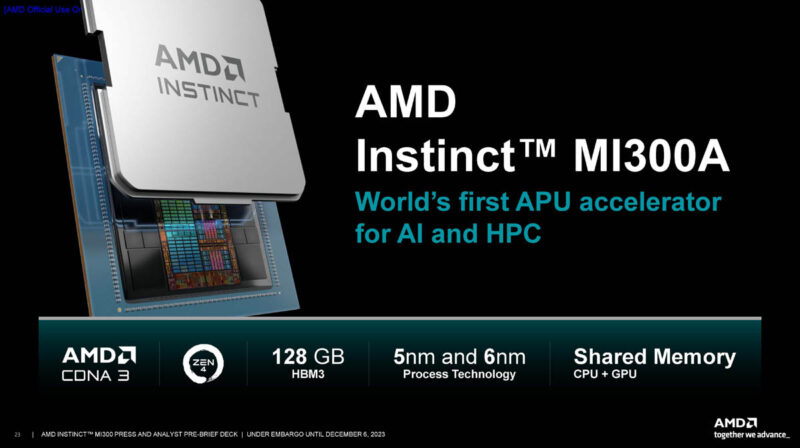
Here is the rub on why this is a bit of magic. The APU has unified memory. With a single HBM3 pool, the CPU can transform data and then the GPU can directly access that same memory. This is what the original Intel Falcon Shores was trying to do until Intel announced it is 3 Years Behind AMD and NVIDIA in XPU HPC. NVIDIA Grace Hopper has an Arm CPU with LPDDR memory and a H100/ H200 GPU with HBM on the same 1kW module, but those are two different memory pools.
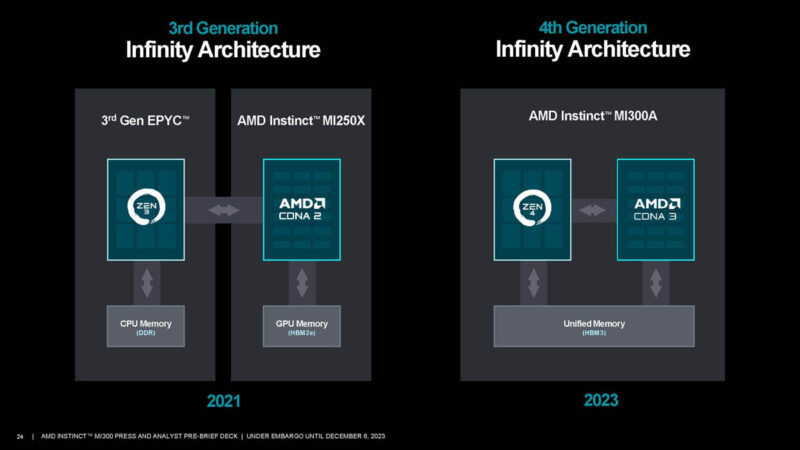
The APU has another big advantage. It does not need to power long transfers across PCB between the CPUs and GPUs. Instead, data can sit in HBM3 and just move to the correct compute element.
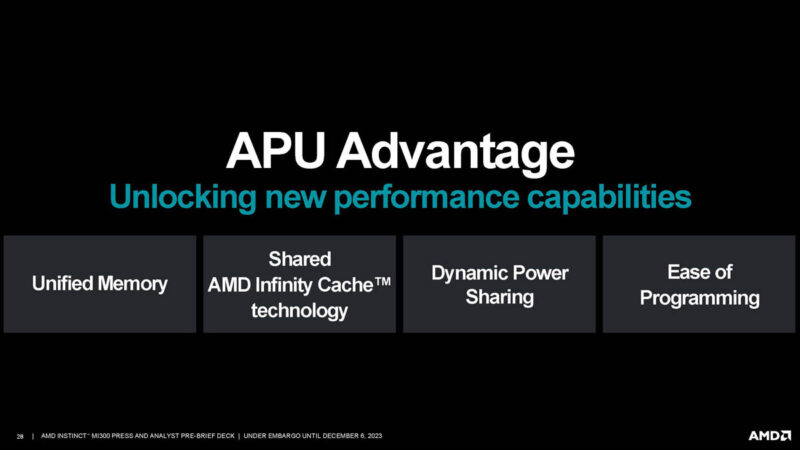
As we can see, we get 24 Zen 4 cores, but that comes at the cost of two XCDs on the GPU compute side.
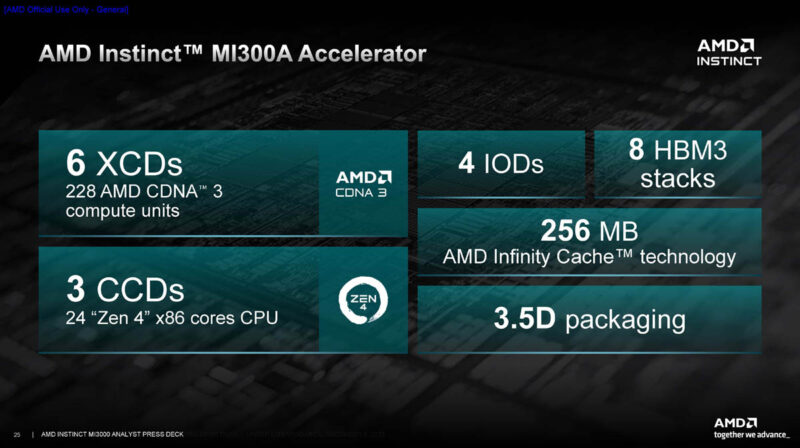
Here is the chiplet stack. We did a piece on the Intel Xeon Max with HBM2e. AMD has twice the capacity of faster HBM3 memory. While it only has 24 cores versus Intel’s 56 cores, AMD also has a giant H100-class GPU sitting on the same package.
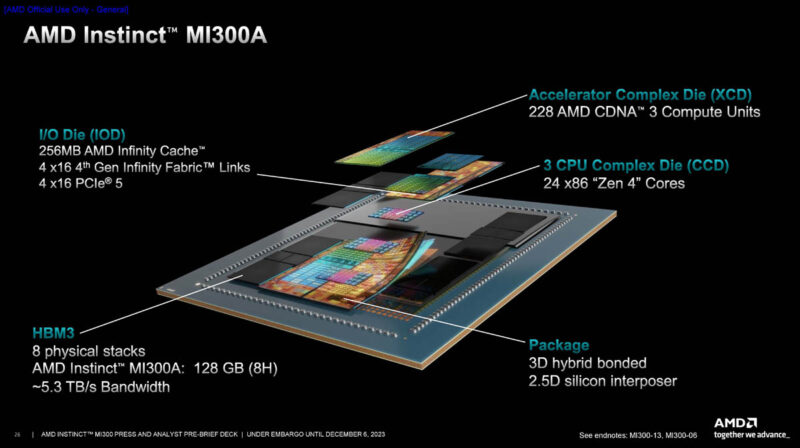
Taking a look at that H100-class claim, here is the comparison between the two.
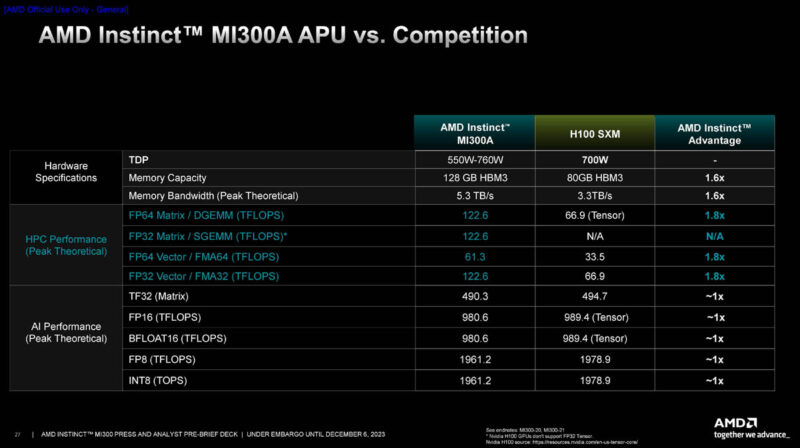
AMD has huge HPC performance in things like OpenFOAM.
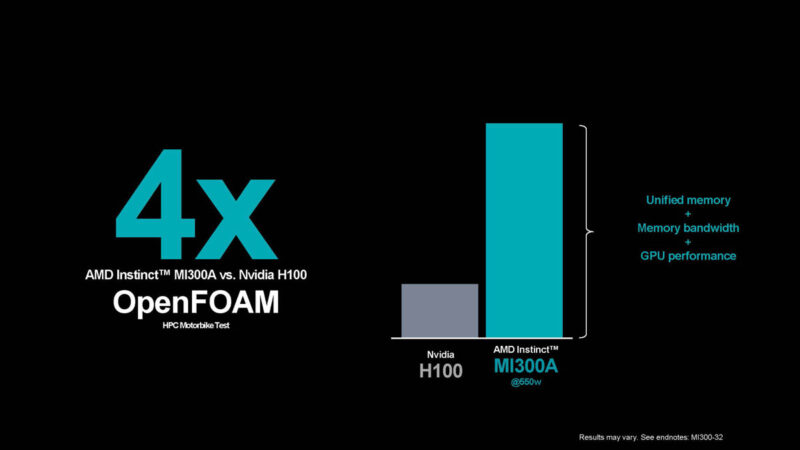
Interestingly enough, AMD is comparing itself to the 1kW NVIDIA GH200 which would be NVIDIA’s most direct competitor.
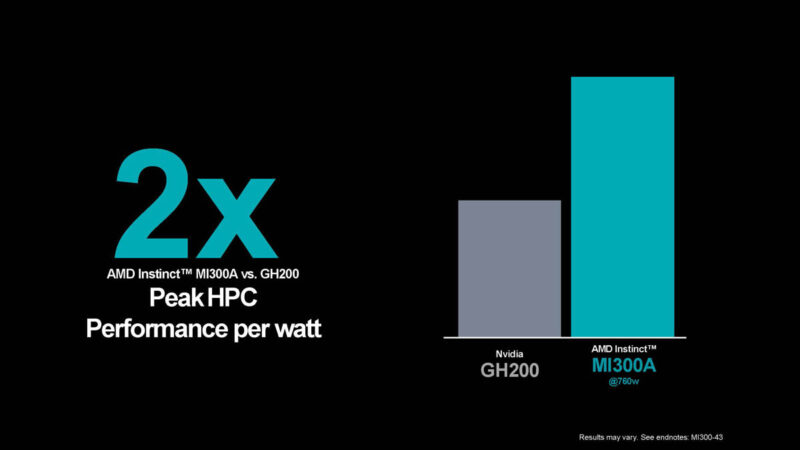
On the HPC leadership side, this looks good, but we are a bit surprised that AMD is not further ahead.
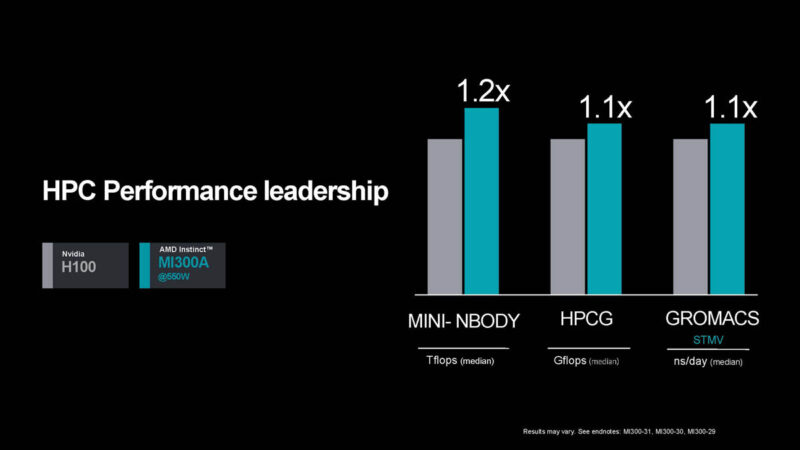
Of course, the big proof point for the MI300A is El Capitan. We are hoping this makes the June 2024 Top500 list. It will be going head-to-head with Intel’s Aurora supercomputer to take over #1 on the list.

Partner-wise, AMD only has four OEMs.
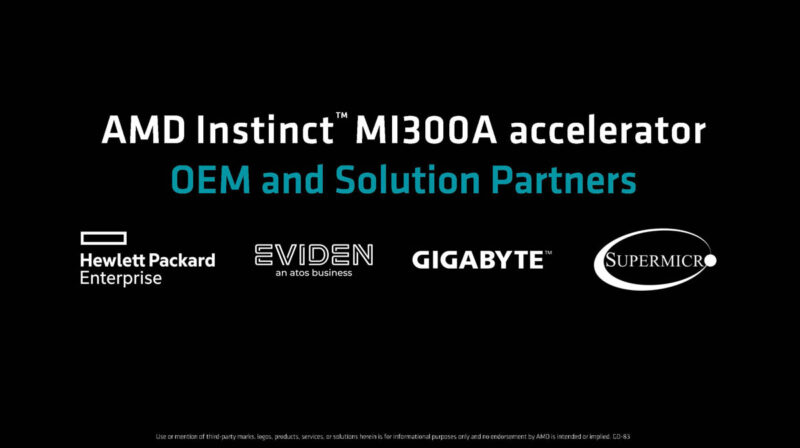
We actually showed the “Giagantic” AMD MI300A APU at SC23.
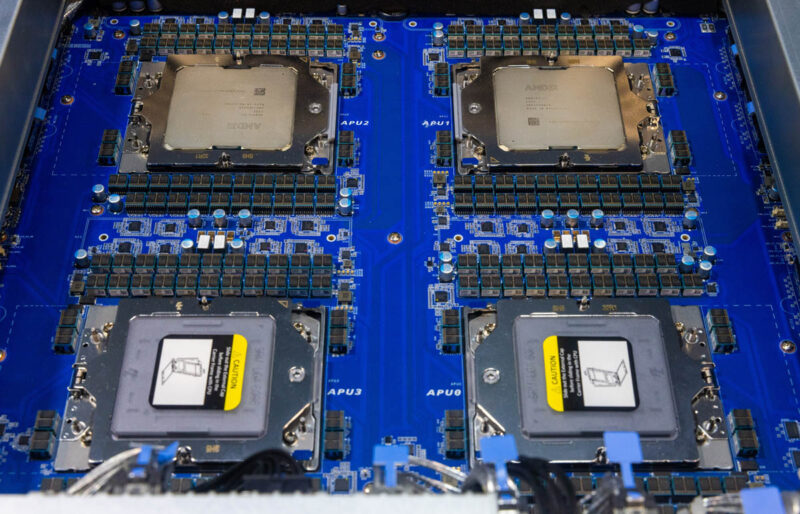
Next, let us get to the MI300A architecture.




STH testing when?
Great article as always Patrick and Team STH
It looks like a couple of MI300A systems are available: https://www.gigabyte.com/Enterprise/GPU-Server/G383-R80-rev-AAM1 and https://www.amax.com/ai-optimized-solutions/acelemax-dgs-214a/
Couldn’t find prices but if it’s supposed to compete with GH then it’ll be around U$30K.
It’s a good question which of the MI300A or MI300X is going to be more popular. As a GPU could the MI300X be paired with Intel or even IBM Power CPUs?
I personally find the APU more interesting. Not because the design is new so much as the fact that real problems are often solved using a mixture of algorithms some of which work well on GPUs and others better suited to CPUs.
Do you know if mi300A supports CXL memory?
I hope to see some uniprocessor MI300A systems hit the market. As of today only quad and octo.
Maybe a sort of cube form factor, PSU on the bottom, then mobo and gigantic cooler on the top. A SOC compute monster.
In the spirit of all the small Ryzen 7940hs tiny desktops. Just, you know, more.